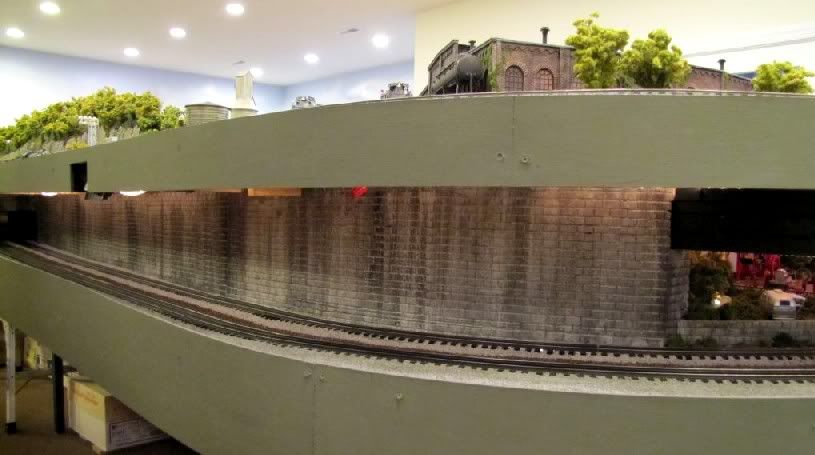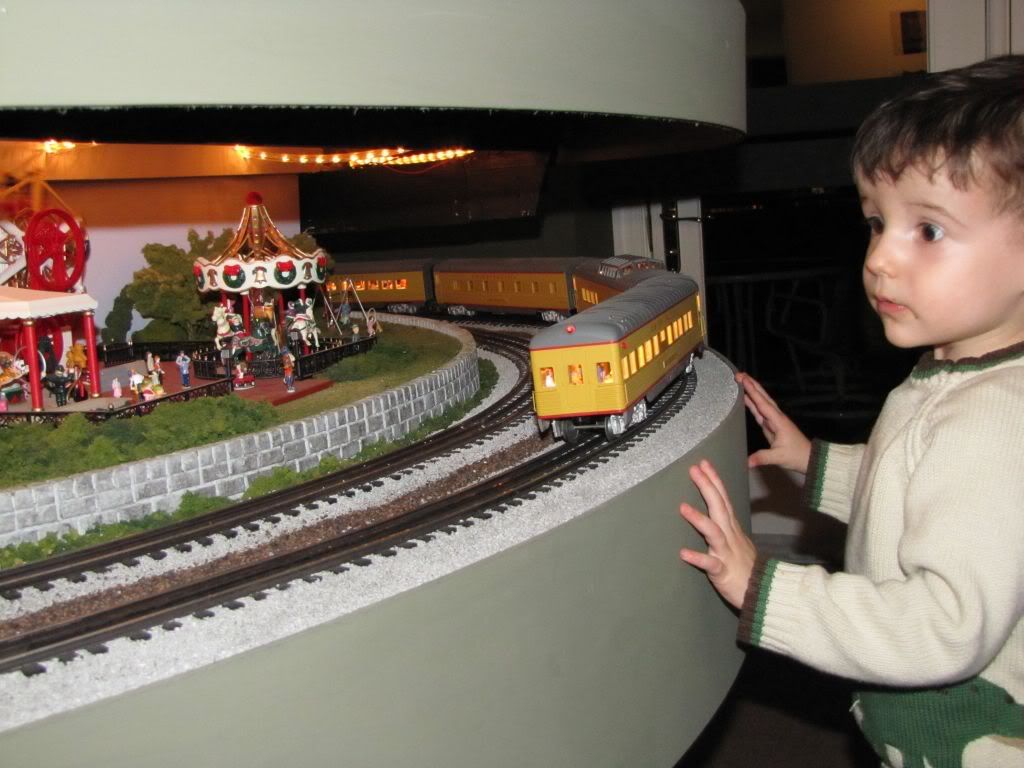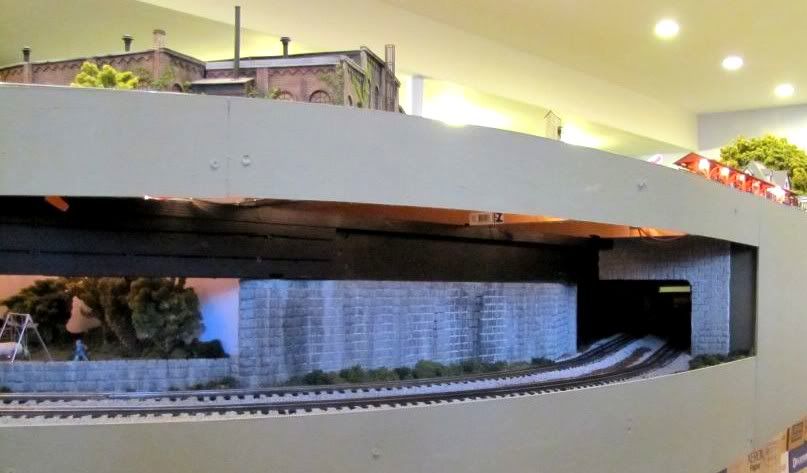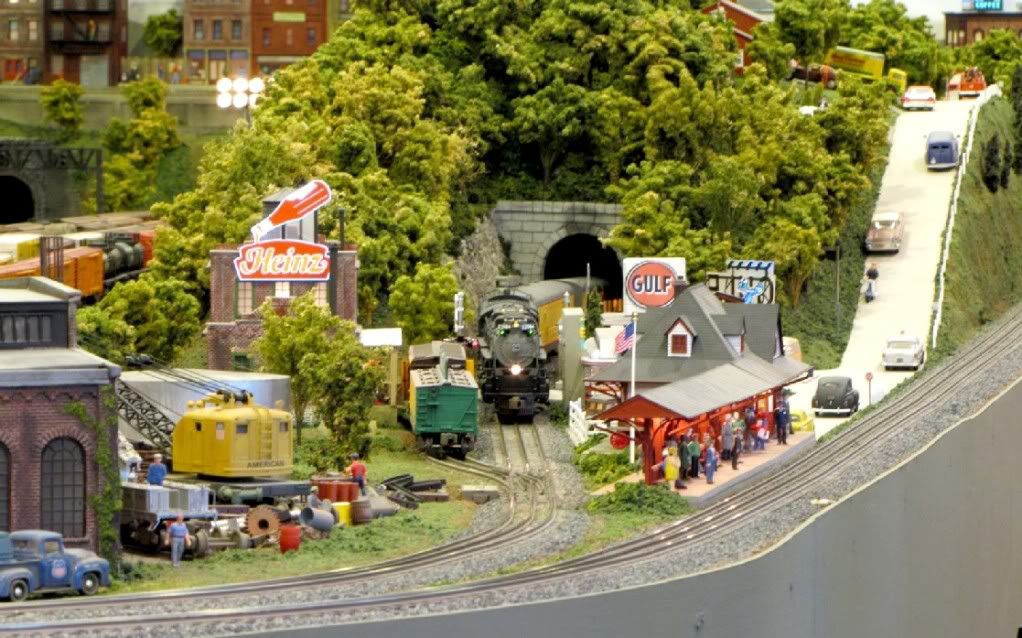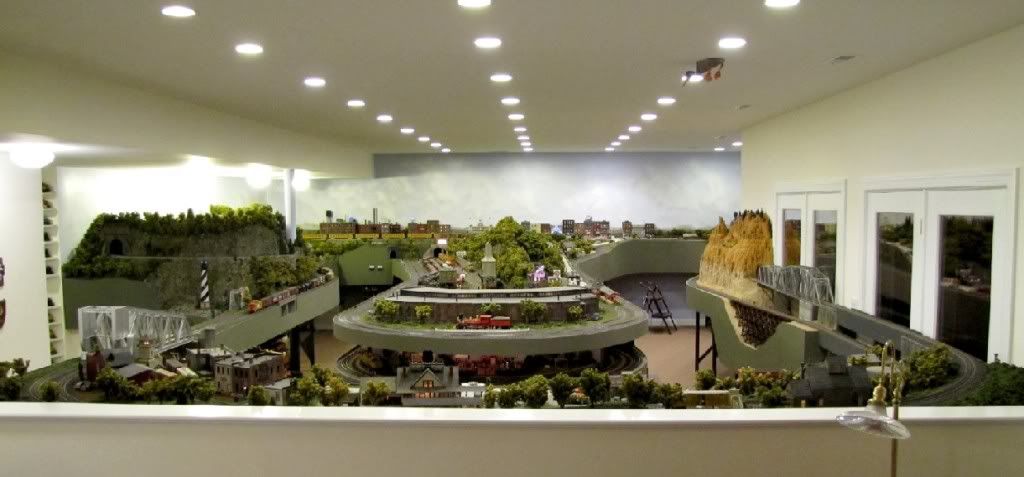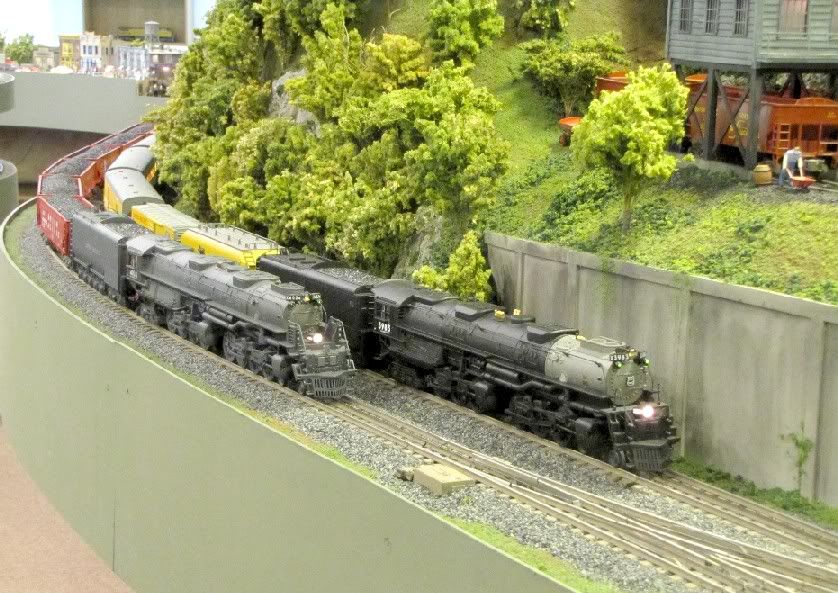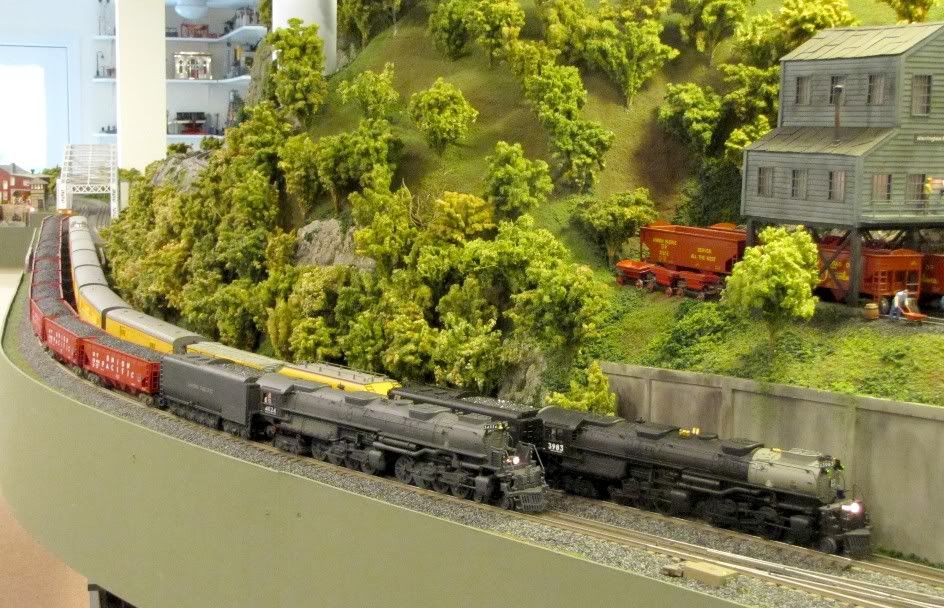quote:Originally posted by wbg pete:
Sorry for delay in responding - we were out most of yesterday.
Harry Doyle basically described how to superelevate track: I used both wire and balsa stripwood shims. I used a 1" long balsa shim about every three inches to prevent "Sag". You do not need a lot of shim height to get the proper effect. Too much doesn't look right and can induce stringlining.
As soon as the track was in place, the ties and rails were painted using a cheap flat interior Latex paint. Eliminating the black ties and all three shiny rails greatly improves the track and overall layout appearance.
My ballast comes from roofing shingle granules: three 50# buckets worth are on the layout - Gargraves ties are thick and it takes a lot to cover them.
CTT is the only way to see photos of the layout. Sorry.
TAG is correct; scale stuff does not look good on O-72 curves. My large steam and diesel locos are Lionmaster or RailKing and I use "6464" size (Lionel, K-Line, Indust. Rail, etc.) freight cars and 16" MTH RailKing pax cars. 99% of the layout visitors have no clue, nor do they care, whether the trains are scale or not, all they see are trains that "look good" rounding the layout's many curves. I don't run any MTH RailKing freight cars, they just don't look right on my layout - too large.
This is a Lionmaster Challenger leading a modified MTH "6464" sized boxcar and MTH 16" Railking pax cars around a curve: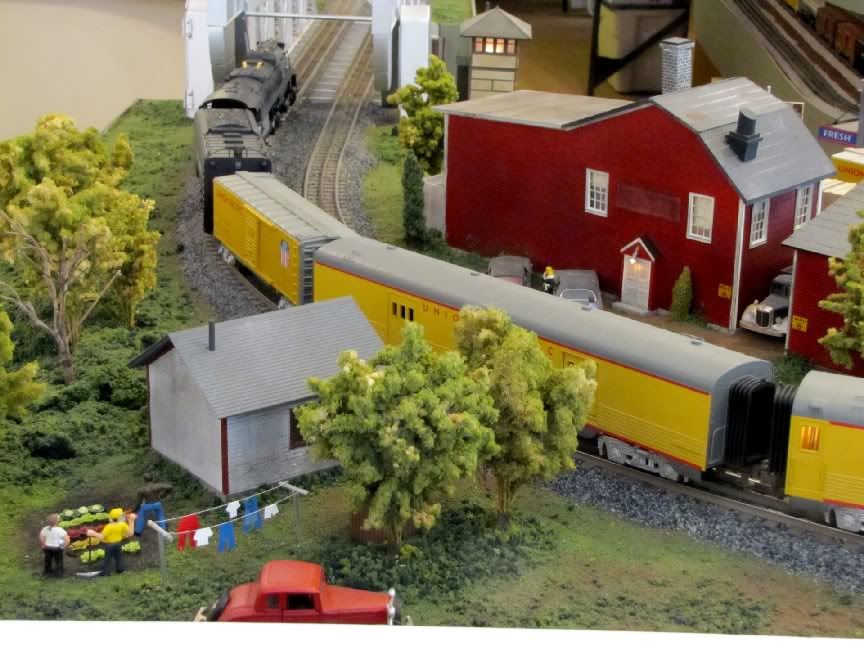
Pete, you have one of the best hi rail layouts I have seen. I do have the CTT magazines that said you have a captive audience here that would like to see more.
One question. Where does he loop underneath the main peninsula go? It does not show in the CTT track plan?
George



